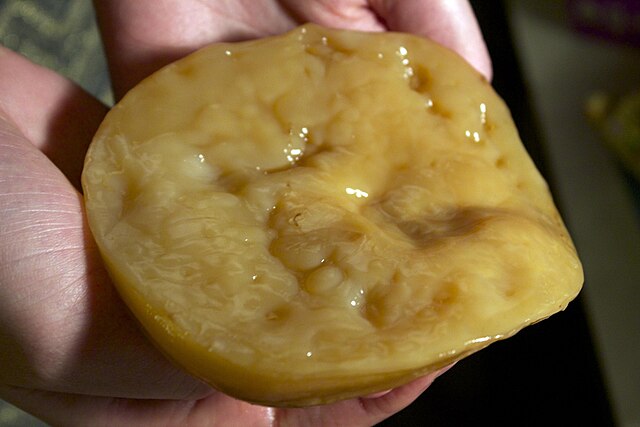Kombucha is a fermented, lightly effervescent, sweetened black tea drink. Sometimes the beverage is called kombucha tea to distinguish it from the culture of bacteria and yeast. Juice, spices, fruit or other flavorings are often added.
Kombucha tea, including the culture of bacteria and yeast, which is not usually consumed
Yeast and bacteria in kombucha magnified 400 times
A SCOBY used for brewing kombucha
Several brands of commercial kombucha on store shelves, Eastern Pennsylvania, 2019
Symbiotic culture of bacteria and yeast (SCOBY) is a culinary symbiotic fermentation culture (starter) consisting of lactic acid bacteria (LAB), acetic acid bacteria (AAB), and yeast which arises in the preparation of sour foods and beverages such as kombucha. Beer and wine also undergo fermentation with yeast, but the lactic acid bacteria and acetic acid bacteria components unique to SCOBY are usually viewed as a source of spoilage rather than a desired addition. Both LAB and AAB enter on the surface of barley and malt in beer fermentation and grapes in wine fermentation; LAB lowers the pH of the beer/wine while AAB takes the ethanol produced from the yeast and oxidizes it further into vinegar, resulting in a sour taste and smell. AAB are also responsible for the formation of the cellulose SCOBY.
A SCOBY used for brewing kombucha.
Kombucha co-culture with SCOBY biofilm
A group of kombucha SCOBYs





